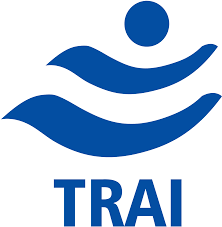TRAI Evaluates Mobile Network Quality Across Key Indian Cities and Routes via IDT in March 2025
These assessments were part of TRAI’s continued commitment to monitor and ensure the delivery of high-quality telecommunications services for both voice and data across different geographic terrains and usage scenarios.

- Country:
- India
In March 2025, the Telecom Regulatory Authority of India (TRAI), through its appointed independent agency, carried out a comprehensive series of Independent Drive Tests (IDTs) to assess the quality of mobile network services offered by telecom operators in various regions across India. These assessments were part of TRAI’s continued commitment to monitor and ensure the delivery of high-quality telecommunications services for both voice and data across different geographic terrains and usage scenarios.
Regions and Routes Covered in the Drive Tests
The drive tests spanned a mix of urban cities, highways, railway corridors, and coastal regions. The selected locations included:
-
Nagpur city in the Maharashtra Licensed Service Area (LSA)
-
Prayagraj city and the railway route from Prayagraj to Kanpur in the UP East LSA
-
Mumbai city, the Mumbai–Pune Expressway, railway route from Mumbai Central to Vasai Road, and the coastal route from Gateway of India to Elephanta Caves within the Mumbai & Maharashtra LSA
-
Ambala city in the Haryana LSA
-
Chennai city, the highway route from Chennai to Coimbatore, and railway routes from Vijayawada to Chennai and Coimbatore to Chennai in the Tamil Nadu LSA
-
Srinagar city in the Jammu & Kashmir LSA
-
Indore city in the Madhya Pradesh LSA
Objective and Methodology of the Drive Test
The primary objective of the IDTs was to evaluate the real-world performance of cellular mobile telephone service providers, particularly in areas with high consumer density and on vital connectivity routes. TRAI aimed to obtain empirical data on service quality to verify if telecom operators are meeting the standards set for both voice and data services.
The drive tests involved measurement of live network conditions and service parameters at different locations and times. The results reflect network performance only at the time and route of testing, providing a snapshot rather than continuous monitoring.
Telecom Operators Assessed
The drive tests covered all major telecom service providers in the country:
-
M/s Bharti Airtel Ltd.
-
M/s BSNL/MTNL
-
M/s Reliance Jio Infocomm Ltd.
-
M/s Vodafone Idea Ltd.
These providers were tested for service quality across various network technologies such as 2G, 3G, 4G, and 5G, where applicable.
Key Performance Indicators (KPIs) Assessed
The IDTs focused on multiple KPIs for both voice and data services to determine the overall service experience from a consumer perspective.
Voice Services KPIs:
-
Call Setup Success Rate – Measures the success in establishing calls.
-
Drop Call Rate (DCR) – Assesses the frequency of unexpected call terminations.
-
Speech Quality (MOS - Mean Opinion Score) – Evaluates clarity and audibility.
-
Voice Packet Drop Rate (Uplink & Downlink) – Indicates network reliability.
-
Call Silence Rate – Represents periods of complete silence during calls.
-
Coverage (%) - Signal Strength – Measures the availability of a usable signal.
Data Services KPIs:
-
Data Throughput (Uplink & Downlink) – Evaluates speed and efficiency of data transmission.
-
Packet Drop Rate (Uplink & Downlink) – Reflects interruptions in data flow.
-
Video Streaming Delay – Measures delay in loading and playing video content.
-
Latency – Assesses delay in response times for data transmission.
-
Jitter – Evaluates variability in data packet arrival times, affecting stream stability.
Importance of the Findings
The results of these IDTs are vital for both TRAI and consumers. They offer transparency regarding how well telecom operators perform under real-world conditions, as opposed to just theoretical or lab-based benchmarks. The data collected helps TRAI enforce compliance with service quality regulations and identify areas requiring improvement.
Moreover, such reports empower consumers with knowledge about network performance in their regions and along their travel routes, allowing them to make informed decisions about telecom services.
Next Steps
TRAI is expected to publish detailed drive test reports with region-wise and operator-wise performance data. These reports typically include comparison charts and city-specific grades, aiding both policy formulation and customer awareness. In parallel, telecom operators are expected to review their performance metrics and address any shortcomings highlighted by the drive tests.
By routinely conducting such independent evaluations, TRAI reinforces its regulatory role in fostering competition, accountability, and enhancement of service standards in India's rapidly evolving telecom ecosystem.
ALSO READ
Supreme Court to Hear Vodafone Idea's Plea for Rs 30,000 Crore AGR Waiver
TCS bags add-on advance purchase order worth Rs 2,903.22 cr from BSNL
TCS Secures Major APO from BSNL for 4G Network Deployment
Supreme Court Blow: Vodafone Idea's $5 Billion Debt Plea Rejected
India's Telecom Giant Vodafone Idea Faces Financial Turmoil










